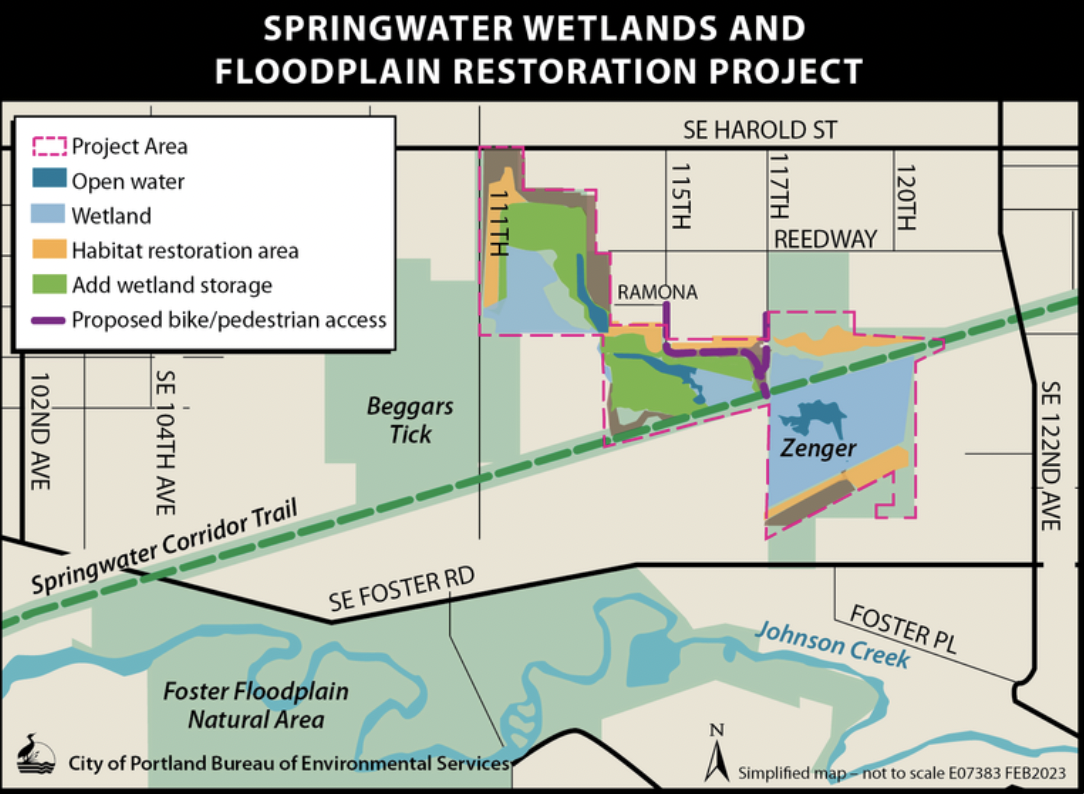
“Without this trail connection, the network is broken, access is diminished and active transportation becomes less attractive than with the connection.”
-Roger Geller, PBOT
The Portland Bureau of Environmental Services’ (BES) Springwater Wetlands and Floodplain Restoration Project is meant to reduce the risk of flooding in the Foster-Powell and Lents neighborhoods near the wetlands along the Springwater Corridor Trail and restore habitats for wildlife like birds, pollinators and amphibians.
But Oregon’s protected red-legged frogs aren’t going to be the only ones with spruced up stomping grounds. Planners also want the project to include a new bike and walking trail connection from the Springwater Corridor Trail to east Portland neighborhoods and a future major bikeway corridor.
Portland Bicycle Coordinator Roger Geller and members of the Portland Bicycle Advisory Committee (BAC) weighed in on the project at a Tuesday BAC meeting after a presentation from BES senior engineer Tressie Word. The project team is currently in the midst of the land review process for the floodplain restoration and need to show that the trail is a clear public benefit in order for approval.
“We’re trying to increase habitat health, hold more stormwater on city property and improve community access to nature and [neighborhood] centers,” Word said. “The planned trail connection that we’re talking about is something that’s been in the works for a long time.”
The new trail would add a connection between the Springwater Corridor Trail and SE 115th and 117th Avenues. 115th Ave is in the Portland Bureau of Transportation’s Bicycle Plan for 2030 as a future bikeway corridor. Geller said PBOT is seeking funding for the 115th Ave bikeway project and having this short trail connection over the floodplain will help move it along.
“This is an important corridor we’re seeking funding for, and this little trail connection is a relatively complicated element because it’s in a wetland,” Geller said. “We’re very happy that BES is being such a good partner and incorporating it into their project.”
It may be a short trail connection, but without it, it would be more difficult to access the future 115th bikeway from the Springwater Corridor Trail (and vice versa).
“Without this trail connection, the network is broken, access is diminished and active transportation becomes less attractive than with the connection,” Geller wrote to BES in a letter of support for the project.
The project team is facing opposition from neighbors who are concerned about a new trail connection in their neighborhood for fear of a potential increase in crime, vandalism and drug use. Geller said he believes the benefits of this project would vastly outweigh any potential detrimental impacts.
“These are concerns that have been expressed with pretty much every single trail project that has been developed across North America for decades,” Geller said. “And that’s always the concern before the project is implemented, and then once the project is implemented, it turns out that people really do appreciate the trail. They do appreciate the access to nature. The types of concerns that they express really don’t come to fruition.”
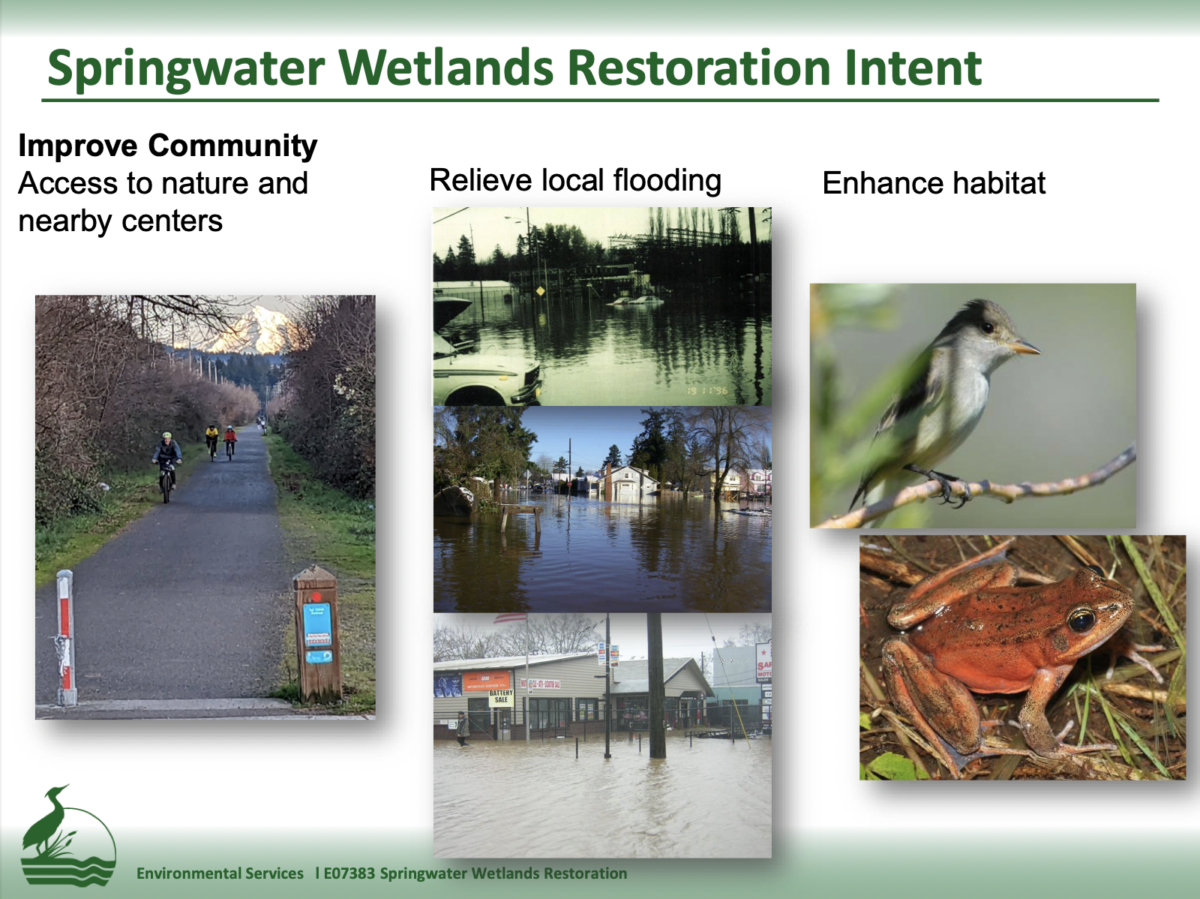
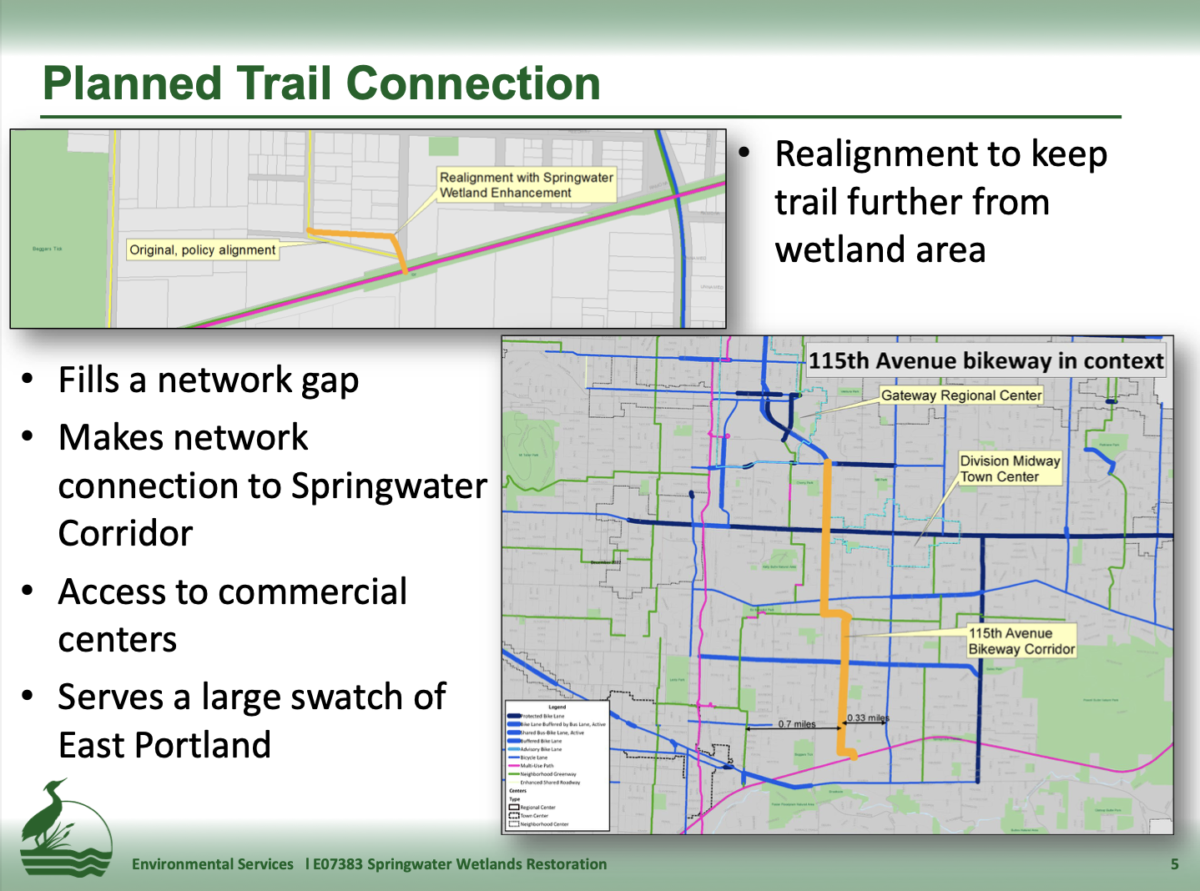
The BAC voted to approve a letter supporting the project, which includes the following points for why the trail provides significant public benefits:
- Contributes an important transportation connection between the Springwater Trail running east-west (that connects communities from Sellwood to Boring) and the north-south bikeway to be developed on 115th Avenue.
- Serves an important part of the city’s planned bicycle transportation network – filling a gap to strengthen overall circulation within the network.
- Provides access from many neighborhoods to the north to the Springwater Trail, which serves as both a transportation corridor linking to commercial centers like Division-Midway and Gateway (as a Major City Bikeway providing a safe alternative to Foster Road) and as a recreational destination (connecting to other major recreational destinations like Powell Butte Nature Park).
- Provides a safe, active transportation connection that encourages bicycling or walking rather than driving – improving opportunities for Portlanders to lead healthy lives.
- Supports lowering carbon emissions, reducing household costs and providing access to open spaces, especially for Portlanders of color, with low incomes and limited English proficiency that are more likely to experience environmental impacts and housing and transportation cost burden.
If all goes according to plan, construction on the wetlands restoration project and the trail will begin in spring 2024. It’s not yet clear when the 115th Ave bikeway will be constructed.


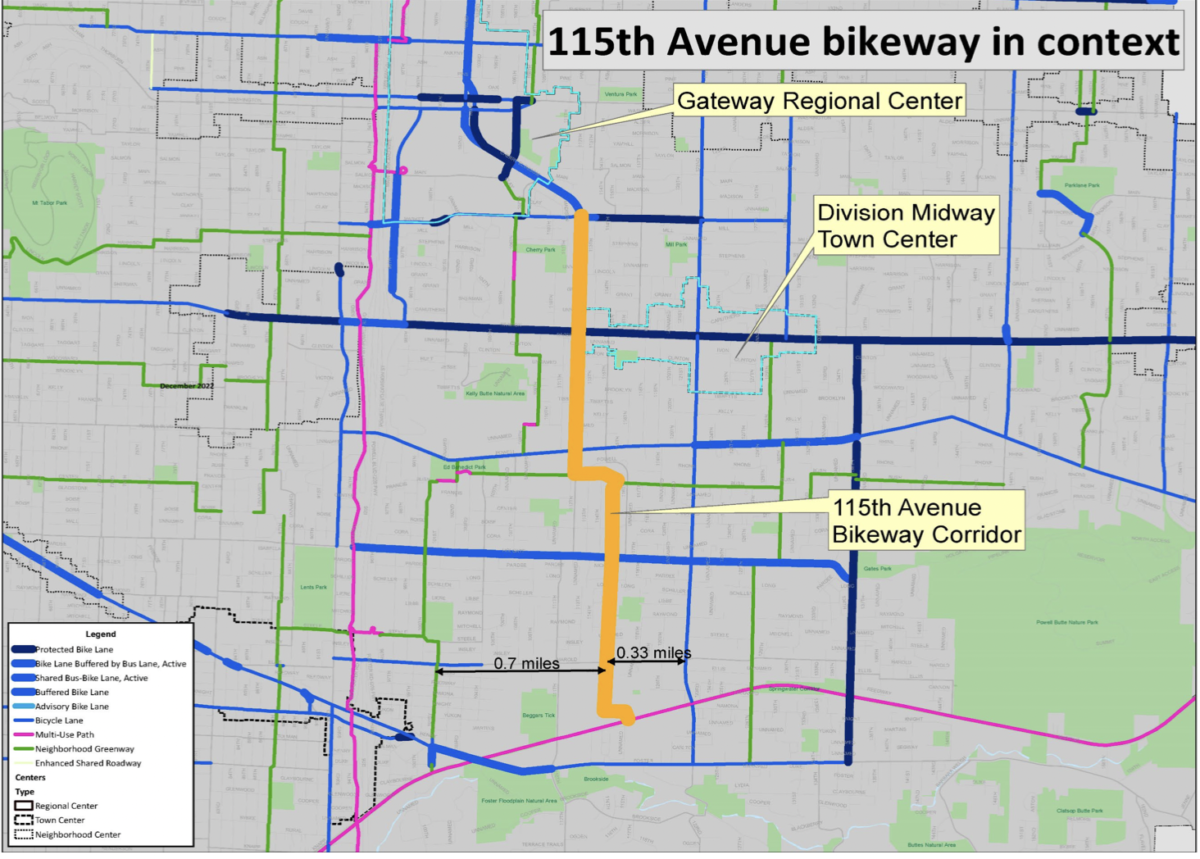
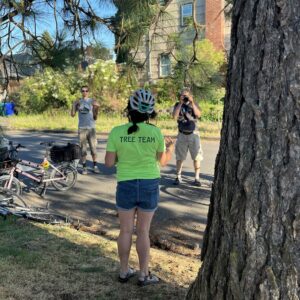
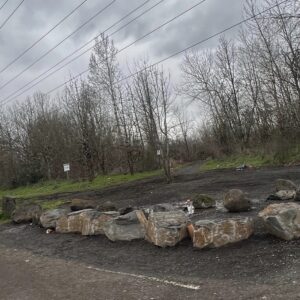
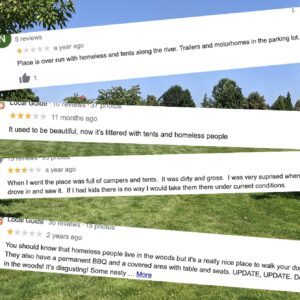
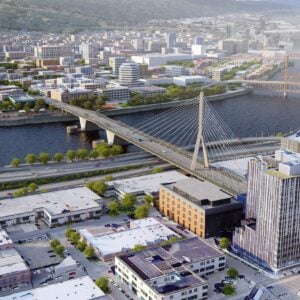
Thanks for reading.
BikePortland has served this community with independent community journalism since 2005. We rely on subscriptions from readers like you to survive. Your financial support is vital in keeping this valuable resource alive and well.
Please subscribe today to strengthen and expand our work.
“The project team is facing opposition from neighbors who are concerned about a new trail connection in their neighborhood for fear of a potential increase in crime, vandalism and drug use. Geller said he believes the benefits of this project would vastly outweigh any potential detrimental impacts.”
Does he live anywhere near this area?
Will he or the city guarantee they will actually keep it clear?
The Neighbors have valid concerns that the city never addresses after the fact.
Can it really get any worse in this area? I don’t see how a small section of new trail would attract more than are already camping in this space. Now, will the trail actually be safely passable? That’s a good question.
I live *incredibly* close to all this and I welcome any new bike/ped upgrades. Most of what we have out here is not great. Can it really get any worse in this area? I dunno, sure, I guess. But this new connector won’t be the factor if things get worse. Beggars Tick and the surrounding areas are already a disaster. They just pulled 4 cars off the Springwater right here, two being pulled out of Beggars Tick. There’s trash everywhere. It sucks.
It’s an overgrown vacant area right now, and I fail to see how a nice habitat area with a paved multi-use path would make it worse. Usually the worst areas are weird vacant lots like this. More people walking and biking through there is probably the best thing for reducing crime and other impacts.
I love your perspective ..it’s refreshing. Have you considered running for office?
At the end of January, I did a long photowalk along a portion of the Springwater Trail. It was distressing to walk along the Johnson Creek Watershed. I know from my volunteer work with SOLVE that there have been repeated cleanups along the corridor, so I know it’s been in an even worse condition over the last two years. In any event, last month it certainly looked different than what I saw during a Sunday Parkways event in 2010.
For the record, in my last link I should’ve said Sunday Parkways East Portland in 2011. I was off by a year.
This is a really excellent project. I hope that the 122nd redesign includes some dank bike lanes as well, but having a route that runs along 115th-112th will be really huge for the crossing of Powell alone. I take a trip for work in this part of town about once a week and out of the 15 minutes it takes me to get from A to B, about 5 of that is spent either trying to get a gap in traffic or waiting cars to stop on Powell so I can walk my bike through the crosswalk.
It should really be an official City goal for Portland to have the world’s dankest network of dank bike lanes.
Sorry I won’t ride the Springwater Corridor Trail anymore….too many scary experiences for me
Jared – see my report below. It’s not as bad as it was.
The worst area of the trail are east of 82nd to about 122nd. Although it has been creeping eastward of 122nd again.
It is a bit better currently, but for many riders they can’t take a chance. There is often only one escape route (back the way you came) in many areas. When I last rode it, one section was covered in mud because criddlers had been using the trail to access a very muddy area east of a main road.
Between Foster and 122nd has been one of the worst sections of the Springwater Trail in terms of drug camps, fires, stolen cars, broken glass, etc. The addicts who live there even claimed it by marking it “Needle Trail Not Nature Trail”. I can certainly understand neighbors’ concerns with hooking that up to their streets. How about removing all that mess and making the existing trail safe and usable again before spending money on new infrastructure that also won’t be maintained or policed?
I’m pretty sure you were reading that paint on the ground backwards – I always read it as “Nature Trail not Needle Trail”. Or maybe someone just was annoyed with the preachy bit of the previous paint and reversed it.
Right, they’ve been sweeping people out of the Springwater for years now with no long term success. I’m sure if they do just one more sweep, that’ll solve the problem once and for all.
I’m pretty sure I read it correctly. On the other side of Foster, there’s a similar marker that just says “Needle Trail”.
Of course it won’t. If sweeping is going to keep the path clear, as it has in Gresham, it needs to be ongoing and consistent, not a one off and then done.
I don’t know that sweeping is the answer, but I really don’t have any better ideas. We’re paying a lot in taxes to support drug treatment, mental health, and housing, and those investments haven’t started working, so what else can you do besides ask people illegally camping to leave?
I’m not comfortable leaving our bike trails to be “sacrifice zones” for the addicted and mentally ill. If removing folks from the facility isn’t the answer, what is?
The other day I rode across the Sellwood Bridge to the Springwater and followed it to the I-205 path and then went south to the 224 path (can’t remember what that path is called – maybe the Sunrise Path?).
I was prepared for the camping hellscape so often described in BP comments, so I was pleasantly surprised to find that the scape was less hellish than I expected. There are still quite a few camps between 82nd and 205, but many have been cleaned up. I even saw two trucks on the path, cleaning up a camp – great to see something being done to address the situation.
The 205 path was almost entirely clear between the Springwater and the mall – just a few scattered campsites, and just glass and odd debris on the path in a few places. So someone is obviously taking an interest in keeping the path clear and we should all appreciate it.
I’m hoping that city hall is taking a new direction and not looking the other way anymore. Maybe the new people in City Hall are already having an impact – I hope so.
Sorry to say, give it a few weeks, and it’ll be back to like it was before.
I’ve had a similar experience riding on the 205 path. Seems to me the loudest voices complaining about homeless people on the multi-use paths are people who take their fancy road bikes out there twice a year, not the folks actually using them to commute.
When the weather is good, I take my “fancy road bike” out there nearly every day. And every time I do, I have to dodge broken glass and other debris around the drug camps. A couple of years ago, I even had a collision with an addict who staggered into my path despite my yelled warnings and attempts to stop and avoid that left me with a concussion. More recently, the addicts are openly smoking their meth in plain sight without any attempt to hide it.
The 205 and Springwater are already lost in the minds of the vulnerable riders (physically smaller, female, children, etc) in this city. But sure, go ahead and make them feel bad for feeling threatened by dangerous people. Maybe they would ride them more if our government did even the bare minimum to enforce existing laws and keep people safe.
Comment of the week! Will you run for public office in Portland? Please!!!
I’m amazed how bad the 205 path can be around Gateway Green. If there’s one place to provide a good path/access/biking experience for vulnerable riders, I’d say it’s there. The MUP is the only access to this city bike park, and yet kids have to ride through all sorts of literal crap to get there from the transit center. Plus, the path is treated as the smoking area for the transit center by riders and employees alike. So it’s a failure of all sorts of agencies to care about the place. It’s not just campers; the shrubs get overgrown over the path, and the leaves and trash pile up through there, too. It’s the kind of thing that a bare minimum amount of maintenance would take care of, but yet the path is just treated as this lesser place, and nothing is done. It’s truly sad to see.
Fortunately, “Better Red” will add a new connection east of the existing max line, getting riders to the top of the hill at Gateway. I’m hopeful that this will be a safer, more pleasant way to access the park. I hate feeling like I have to drive and park in Maywood if I want to ride there with my kids, when we could potentially ride to MAX and get off at Gateway, but the connection from that side has just been so unreliable in the past.
I wouldn’t claim to have a loud voice but probably a reasonable one. Maybe you were confused with 182nd to Boring? Because Gresham has actually made it a priority to keep the trail in safer conditions. Maybe you haven’t seen people tossing axes and knives along the trail, burning wood on the trail, leaving many needles on the trail, or driving Cars/ mopeds on it but I have more than enough times to know that is isn’t an outliers but a norm. Please help us understand how you view this differently so we can feel better about it. Also, I ride a free bike. Far from expensive. Why? Because those get stolen while you’re riding them in the Springwater….
Fancy Bike alert!
I know plenty of people who commute on “fancy” bikes or used to before the paths got so bad…do you have a special “commuter” detector?
Since we are down to a bike commuter share of 2%, there aren’t many people riding them on any kind of bike thanks to condition of the paths so I don’t think your experience is a common perception or the reality.
It ebbs and flows, though. It might have looked ok-ish the other day, but in 10 days, who knows?? I live out here and use the Springwater and 205 very often. It’s like wack-a-mole. One spot gets swept, the monumental task of cleaning that spot happens, then another spot a few hundred feet away becomes an overnight disaster. No matter what angle you want to look at it from, it’s incredibly frustrating and depressing.
I agree with you that it’s like whack-a-mole. The thing is that the paths aren’t substantially better or worse than any other part of the city, especially east of 82nd. I don’t think homeless people are nearly as big of a barrier to people riding bikes around here as inattentive and reckless drivers.
It’s true that the folks driving on the Springwater and other bike facilities are a real menace, no matter how attentive they are.
The 205 Path, from SE Clatsop to the Mall, is in Clackamas County. Their Sheriff is a bit more hardcore on camping than Portland Police are.
I didn’t know that – thanks. I’m trying to find a ray of hope in the situation. I mean, it seems as though no one at Portland City Hall is actively slapping down the people who said “Something really need to be done.” And the fact that someone is *TRYING* to clean up is also hopeful.
I suppose we should all band together and keep riding these MUPs, in groups wherever possible, and not cede them to campers.
A. They need to include Beggars Tick and remove the towing biz that is located to the north east as well. Currently BT is a mess. Parks have removed the parking access and essentially given up on the property. Mark Ross from parks has no answer. B. I don’t mind Roger but his response seems tone def. I live near and go through this area often for my kids school. The city can say “the greater good” but even when they build infrastructure in East Co, they do almost little to keep it usable. Where does routine maintenance equity come into play? I challenge any and all to ride your bike along foster from 205 to 136th. It’s filled with garbage. Try going on 136th with its new lanes… filled with garbage from Foster to Stark. So while I get Roger’s idea, it still doesn’t move the needle. Yeah, I didn’t mention the other aspects of this situation which we could spend for lever on, the housing and sanitary situations. So yay, the city will do something but in this scenario, I’m not sure doing something is better than doing nothing. It truly needs an overhaul.
Well said, Doug. The city is great at building stuff (the fun part) but terrible at maintaining stuff (the hard part). We see it over and over.